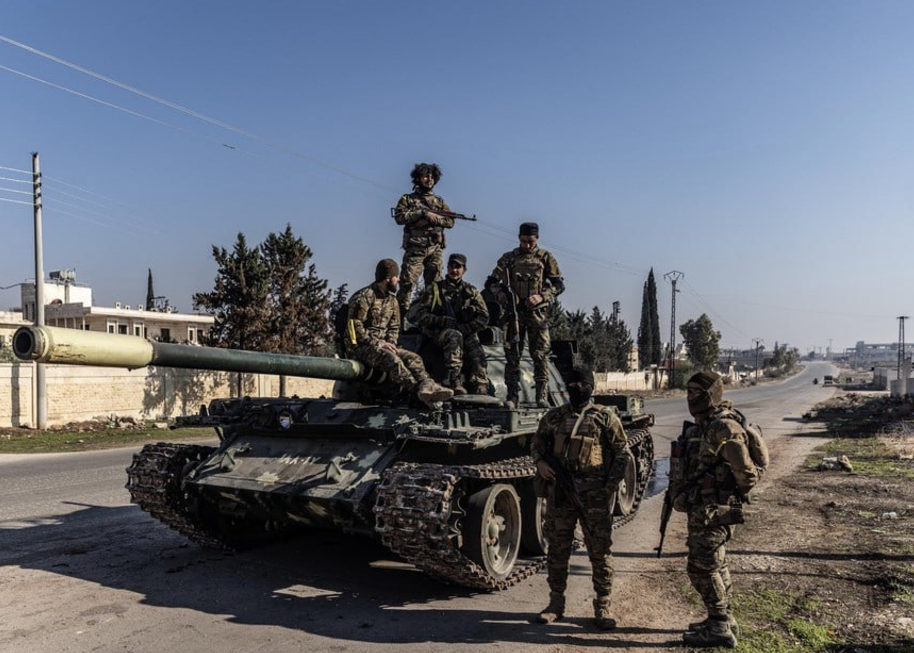Syrian government forces “melted away” as opposition fighters advanced, according to multiple open source observers. “Without the backbone, brains and arms of Iran’s many proxy militias in Syria, the regime can’t defend itself and Hizbullah was Iran’s main weapon and tool of control in Syria. Hizbullah’s withdrawal from Syria back to Lebanon was a major opportunity for the regime’s opponents. And they’ve taken it,” a regional security source told us.
“There is no overstating the importance of Hizbullah to the survival of the Assad regime,” a journalist based in the region told Field. “In 2013, Assad was about to get on a plane to exile with his family – it’s an open secret. On Iran’s orders, Hizbullah sent thousands of its fighters to seize strategic free Syrian border towns that had rebelled and were then self-governing. Without Hizbullah, Assad would almost certainly have fallen.”
There is a small but significant detail related to this offensive. The different opposition armed groups involved in this offensive are all flying the Free Syrian group. “Opposition groups from all over Syria had been bussed to Idlib as part of local ceasefire deals when besieged enclaves were starved into surrender and allowed safe passage to Idlib in exchange for a return to Syrian regime security control. But the groups are not flying their flags, even Hayat Tahrir Sham flags [the Al Qaeda offshoot that is the largest of the armed groups in Idlib],” a Syria watcher told us. “Using the Free Syrian flag suggests that they realise that to have any chance of success the armed groups need to be cohesive and present themselves as a credible, non-radical alternative to Assad.”
Although the regime’s forces on the ground may be weaker, or fleeing they still have resources. “Without Iran’s Shia fighters to defend it, the Syrian regime has one main tool to try and sustain it – fear,” according to a Western military source. “The Syrian air force and the remaining Russian air assets in Syria will bomb the hell out of Idlib, Aleppo and anywhere else the opposition forces go. They aren’t bombing for military objectives. They are bombing residential areas, markets and civilian targets to send the message that you [civilians] won’t be bombed under regime control and you will be bombed if you are under opposition control. The regime does this as they don’t have the foot soldiers capable of actually securing the ground. They will use airstrikes including barrel bombs, we may see scud missiles being fired again and God forbid even more use of chemical weapons against opposition-controlled areas.”
It is noteworthy that an IRGC General has already been killed in Aleppo. Iranian state media said that Islamic Revolutionary Guards Corps (IRGC) Brigadier General Kioumars Pourhashemi, a senior Iranian military adviser in Syria, was killed in Aleppo.
A Western diplomat commented that “Iran’s strong relationship with Syria goes back to the 1980’s when both countries had a mutual interest in containing Iraq. Mutual dependence remains. The Syrian regime will fall without Iranian support, as it nearly did in 2013 until Hizbullah’s decisive intervention. Iran needs Syria to project power and for its black market economy. So, Iran is unlikely to give up without a fight.”
Open source reporting notes that over the weekend there were deployments of Iranian and Hizbullah forces to the north of Syria to “protect their assets”. The question is whether they are referring to missiles and tangible military assets, or whether the Assad regime is still an asset that they need to protect, and whether they have the resources to do it.


